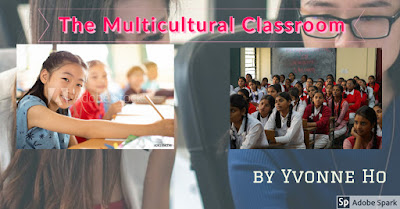Post 169: How to Deal with Multicultural Students and Deliver Content in a Multicultural Classroom
First, delivery must address all the learning styles of your students. Students from other countries may not be used to the 'hand-on' 'Discovery=Inquiry' style of the United States teaching system. First, the teacher must make a needs analysis of her class to see what her multicultural students need. In a face to face classroom, this is done by having students write a paragraph about themselves in class so the teacher can gauge the writing level of the class for a face to face writing class. In an online environment, the online teacher can gauge the writing level of the introduction posts and write down in a spreadsheet the interests and hobbies of her students so she can relate her lessons to her students' interests.
Vary teaching techniques to appeal to students of different modalities such as visual learners, audio learners and hands on learners. You can have students engage in cooperative learning, dialogue learning, group work, projects, presentations, debates, individual work, flipped classroom, student teaching, and show and tell. For online teaching, you can have students engage in forums by role play, debates, presentations, and challenging teacher questions using Bloom's Taxonomy. For both online and face to face teaching, you can have interactive assignments like having students create websites.
You can challenge the dynamics of power and privilege by not dominating the classroom by talking too much or giving long lectures. In an online classroom, the online teacher has to take care not to dominate the forums by talking too much. In both online and face to face, let students construct their own knowledge by letting them do the talking and constructing of knowledge while the teacher guides the students along to stay on topic or stay on task. Teachers have to make sure they do not just call on their favorite students, but instead, they have to make sure they call on all students. This goes for both online and face to face classroom.
Teachers can challenge the notion of 'mastery'. Instead of the teacher lecturing to the class, ask students what they know about the topic, ask students what they want to know about the topic. and then ask students to teach the topic. In this way, the online or face to face classroom becomes a more student-centered classroom. In a multicultural classroom, you get the exciting perspective of many different cultures and you get to learn how other cultures learn and how other cultures feel about a topic. When you encourage multicultural students to participate, you get a cultural enrichment component you would not get in a monolingual classroom.
When I was teaching ESL at CSUN, I taught students from many different cultures. Students came from Spain, Saudi Arabia, Japan, China and Brazil. The students and I loved to have fun. I taught a very student centered classroom. Every week, we would have a sing along. I would ask students to choose their favorite all time song and sing it in English to the class. A group of Japanese students chose 'Hey Jude' and we all sang Hey Jude that week. The Japanese students told me the reason they like Hey Jude is because it has very few slang, and this song is very easy to understand. Hey Jude is also one of my favorite Beattle songs.
Yvonne's Tips For Teacher Blog

Subscribe to:
Post Comments (Atom)
Post 518: How AI Increases Equity for LAPU ESL Students
Another paper I wrote dealt with how AI helps increase equity so that ESL students can keep up with native speakers of English. Equity i...
-
Post 331: Why Asynchronous Online classes work for Writing classes Prof. Warnock or known more affectionately as Prof. W by his studen...
-
32. How can you use Bloom's Taxonomy to help you with your Forum Discussion Questions and your Assessments? There are six stages t...



No comments:
Post a Comment